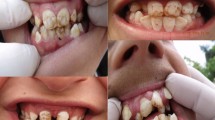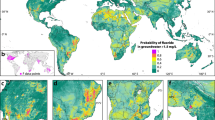Abstract
Fluoride in groundwater has been found to pose a severe public health threat in two villages (Karataş and Sarım) of western Sanliurfa in the southeastern Anatolia region of Turkey, where many cases of fluorosis, which detrimentally affects the teeth and bones, have been reported. Analysis of fluoride in drinking water is usually accomplished using various chemical methods, but while these techniques produce accurate and reliable results, they are expensive, labor-intensive, and cumbersome. In this study, a more cost-effective alternative, based on machine learning methods, is introduced. In this case, artificial neural network (ANN), support vector machine (SVM), and Naïve Bayes classifiers are utilized. Furthermore, a novel feature selection and ranking method known as Normalized Weighted Voting Map (NWVM) is presented. In Fisher discrimination power (FDP) scores, X-ray fluorescence (XRF) variables have higher discrimination power potential than X-Ray diffraction (XRD) attributes, the most salient feature being Zr (0.464) and CaO (219.993) from XRD and XRF, respectively. When the XRD and XRF parameters are classified separately for the effect of NWVM ranking scores on the fluoride values and dental fluoride in groundwater, CaO, SiO2, MgO, Fe2O3, P2O5, and K2O (for XRF) and Quartz and Zr (for XRD) present a stronger effect. In addition, when looking at the effects among themselves, the first order is the same XRF parameters and then the XRD parameters. Experiments revealed that XRF constituents including CaO, SiO2, MgO, P2O5, and K2O have higher class discrimination power than the XRD variables.







Similar content being viewed by others
References
Amini M, Abbaspour KC, Johnson CA (2010) A comparison of different rule - based statistical models for modeling geogenic groundwater contamination. Environ Model Softw 25:1650–1657
APHA, AWWA, WEF (1998) Standard methods for the examination of water and wastewater (20th edn), American Public Health Association, Washington, DC, USA
Asghari Moghaddam A, Nadiri AA, Fijani E (2010) Spatial prediction of fluoride concentration using artificial neural networks and geostatic models. Water and Soil Science (Agricultural Science) 19.1(2):129–145
ASTM International (ASTM D1179-99B) (1999) Standard test methods for fluoride ion in water. 100 Barr Harbor Drive, West Conshohocken, PA
ASTM International (ASTM D5079–08) (2008) Standard practices for preserving and transporting rock core samples, West Conshohocken, PA
Ataş M, Yardimci Y, Temizel A (2012) A new approach to aflatoxin detection in chili pepper by machine vision. Comput Electron Agric 87:129–141
Barzegar R, Moghaddam AA, Adamowski J, Fijani E (2017) Comparison of machine learning models for predicting fluoride contamination in groundwater. Stoch Environ Res Risk Assess 31:2705–2718
Blachnik, M (2009) Comparison of various feature selection methods in application to prototype best rules. In Computer recognition systems 3, vol. 57. Springer Berlin Heidelberg pp. 257–264
Brindha K, Elango L (2011) Fluoride in groundwater: causes, implications and mitigation measures. In: Monroy, S.D. (Ed.), Fluoride properties, applications and environmental management pp. 111-136
Charulatha G, Srinivasalu S, Uma Maheswari O, Venugopal T, Giridharan L (2017) Evaluation of ground water quality contaminants using linear regression and artificial neural network models. Arab J Geosci 10:128
Chen H, Yan M, Yang X, Chen Z, Wang G, Schmidt-Vogt D, Xu Y, Xu J (2012) Spatial distribution and temporal variation of high fluoride contents in groundwater and prevalence of fluorosis in humans in Yuanmou County, Southwest China. Journal of Hazardous Materials 15(235–236):201–209
Dar IA, Sankar K, Dar MA, Majumder M (2012) Fluoride contamination - artificial neural network modeling and inverse distance weighting approach. Journal of Water Science 25(2):165–182
EPA (1993) Environmental Sciences Section, Inorganic Chemistry Unit, Wisconsin State Lab of Hygiene. ESS Method 340.2: total suspended solids, mass balance (dried at 103–105 °C) volatile suspended solids (ignited at 550 °C). Wisconsin State Lab of Hygiene, Madison, WI, USA
Fekri M, Kasmaei LS (2013) Fluoride pollution in soils and waters of Koohbanan region, southeastern Iran. Arab J Geosci 6:157–161. https://doi.org/10.1007/s12517-011-0336-1
Fisher RA (1936) The use of multiple measurements in taxonomic problems. Ann Eugenics 7:179–188
Gasmi A, Gomez C, Zouari H, Masse A, Ducrot D (2016) PCA and SVM as geo-computational methods for geological mapping in the southern of Tunisia, using ASTER remote sensing data set. Arab J Geosci 9:753
Gowrisankar G, Jagadeshan G, Elango L (2017) Managed aquifer recharge by a check dam to improve the quality of fluoride-rich groundwater: a case study from southern India. Environ Monit Assess 189: 200
Groznik V, Guid M, Sadikov A, Mozina M, Georgiev D, Kragelj V, Ribaric S, Pirtosek Z, Bratkoa I (2013) Elicitation of neurological knowledge with argument-based machine learning. Artif Intell Med 57:133–144
Guyon I, Elisseeff A (2003) An introduction to variable and feature selection. J Mach Learn Res 3:1157–1182
Hall M, Frank E, Holmes G, Pfahringer B, Reutemann P, Witten IH (2009) The WEKA data mining software: an update, vol. 11, SIGKDD Explorations; (1), pp 10–18
Harvard (2015) http://www.hsph.harvard.edu/news/features/fluoride-childrens-health-grandjean-choi/. Accessed 4 Feb 2015
He X, Ma T, Wang Y, Shan H, Deng Y (2013) Hydrogeochemistry of high fluoride groundwater in shallow aquifers, Hangjinhouqi, Hetao Plain. J Geochem Explor 135:63–70
HHS (2020) EPA ve U.S. Department of Health & Human Services (HHS). https://archive-it.org/organizations/745. Accessed 14 Dec 2020
Khashei-Siuki A, Sarbazi M (2015) Evaluation of ANFIS, ANN, and geostatistical models to spatial distribution of groundwater quality (case study: Mashhad plain in Iran). Arab J Geosci 8:903–912
Kheradpisheh Z, Mahvi HA, Mirzaei M, Mokhtari M, Azizi R, Fallahzadeh H, Ehrampoush MH (2018) Correlation between drinking water fluoride and TSH hormone by ANNs and ANFIS. Journal of Environmental Health Science and Engineering 16(1):11–18
Kirkpatrick S, Gelatt CD, Vecchi MP (1983) Optimization by simulated annealing. Science 220:671–680
Kumari N, Pathak G (2015) Modelling fluoride pollution of groundwater using artificial neural network in the western parts of Jharkhand. World Academy of Science, Engineering and Technology, vol. 3, (2)
Li C, Gao X, Wang Y (2015) Hydrogeochemistry of high-fluoride groundwater at Yuncheng Basin, northern China. Sci Total Environ 508:155–165
Msonda KWM, Masamba WRL, Fabiano E (2007) A study of fluoride groundwater occurrence in Nathenje, Lilongwe, Malawi. Phys Chem Earth 32:1178–1184
Nadiri AA, Fijani E, Tsai FT-C, Asghar Moghaddam A (2013) Supervised committee machine with artificial intelligence for prediction of fluoride concentration. J Hydroinf 15(4):1474–1490
Nakano Y, Takeshita T, Kamio N, Shiota S, Shibata SN, Yoneda M, Hirofuji T, Yoshihisa Y (2014) Supervised machine learning-based classification of oral malodorbased on the microbiota in saliva samples. Artif Intell Med 60:97–101
Naseem S, Rafique T, Bashir E, Bhanger MI, Laghari A, Usmani TH (2010) Lithological influences on occurrence of high-fluoride groundwater in Nagar Parkar area, Thar Desert, Pakistan. Chemosphere 78:1313–1321
Pérez NP, López MAG, Silva A, Ramos I (2015) Improving the Mann–Whitney statistical test for feature selection: an approach in breast cancer diagnosis on mammography. Artif Intell Med 63:19–31
Sanuade OA, Hassan AM, Akanji AO, Olaojo AA, Oladunjoye MA, Abdulraheem A (2020) New empirical equation to estimate the soil moisture content based on thermal properties using machine learning techniques. Arab J Geosci 13:377
Selinus O (2005) Essentials of medical geology: impacts of the natural environment on public health, Elsevier Academic Press
Singaraja C, Chidambaram S, Anandhan P, Prasanna MV, Thivya C, Thilagavathi R (2013) A study on the status of fluoride ion in groundwater of coastal hard rock aquifers of south India. Arab J Geosci 6:4167–4177. https://doi.org/10.1007/s12517-012-0675-6
Sirisha P, Sravanti KN, Ramakrishna V (2008) Application of artificial neural networks for water quality prediction. Int J Sys Technol 1(2):115–123
Sracek O, Wanke H, Ndakunda NN, Mihaljevič M, Buzek F (2015) Geochemistry and fluoride levels of geothermal springs in Namibia. J Geochem Explor 148:96–104
Srinivasamoorthy K, Vijayaraghavan K, Vasanthavigar M, Sarma S (2012) Assessment of groundwater quality with special emphasis on fluoride contamination in crystalline bed rock aquifers of Mettur region, Tamilnadu, India. Arab J Geosci 5:83–94. https://doi.org/10.1007/s12517-010-0162-x
Tebutt THY (1983) Principles of quality control. Pergamon, England, p 235
Thapa R, Gupta S, Gupta A, Reddy DV, Kaur H (2018) Geochemical and geostatistical appraisal of fluoride contamination: An insight into the Quaternary aquifer. Sci of The Total Environ 640–641:406–418
Tsangaratos P, Ilia I (2016) Comparison of a logistic regression and Naïve Bayes classifier in landslide susceptibility assessments: the influence of models complexity and training dataset size. Catena 145:164–179
UNICEF (1999) States of the art report on the extent of fluoride in drinking water and the resulting endemicity in India. Report by Fluorosis and Rural Development Foundation for UNICEF, New Delhi
World Health Organization (WHO) (1994) Fluorides and oral health, (technical report series no. 846), World Health Organization, Geneva
World Health Organization (WHO) (2006) Fluoride in drinking water, UK: IWA publishing, London, p 144
Yang Q, Hou Z, Wang Y, Delgado J (2015) A comparative study of shallow groundwater level simulation with WA–ANN and ITS model in a coastal island of south China. Arab J Geosci 8:6583–6593
Yesilnacar MI, Rastgeldi Dogan T, Kumral M (2011) The effect of high fluoride in groundwater on human health: initial findings and recommendations of a case study from Sanliurfa, Turkey. ISEB-International Symposium on Environmental Biogeochemistry, Istanbul, Turkey
Yesilnacar MI, Sahinkaya E, Naz M, Ozkaya B (2008) Neural network prediction of nitrate in groundwater of Harran Plain, Turkey. Environ Geol 56(1):19–25
Yeşilnacar MI, Atasoy AD, Kumral M, Dülgergil ÇT, Aydoğdu M (2013) Yeraltı Sularında Yüksek Florürün Oluşumu, Dağılımı, İnsan Sağlığına Etkileri ve Florür Gideriminin Araştırılması, KB Şanlıurfa. TUBİTAK Project No: 110Y234. Sanliurfa, Turkey (in Turkish)
Yeşilnacar M, Demir Yetiş A, Dülgergil ÇT, Kumral M, Atasoy AD, Rastgeldi Doğan T, Tekiner Sİ, Bayhan İ, Aydoğdu M (2016) Geomedical assessment of an area having high-fuoride groundwater in southeastern Turkey. Environ Earth Sci 75:162
Yetis R, Demir Yetis A, Atasoy AD, Yesilnacar MI (2019) Hydrogeochemical characteristics and quality assessment of groundwater in Balikligol Basin, Sanliurfa, Turkey. Environ Earth Sci 78:331
Acknowledgments
The authors would like to especially thank their colleagues for their assistance, both in the field and in the laboratory studies.
Funding
This study was partially funded by the Scientific and Technological Research Council of Turkey (TUBITAK) under grant no. 110Y234. It was also partially funded by the Scientific Research Projects Committee of Harran University (HUBAK) under grant no. 17190.
Author information
Authors and Affiliations
Corresponding author
Additional information
Responsible Editor: Amjad Kallel
Rights and permissions
About this article
Cite this article
Yetis, A.D., Yesilnacar, M.I. & Atas, M. A machine learning approach to dental fluorosis classification. Arab J Geosci 14, 95 (2021). https://doi.org/10.1007/s12517-020-06342-2
Received:
Accepted:
Published:
DOI: https://doi.org/10.1007/s12517-020-06342-2




